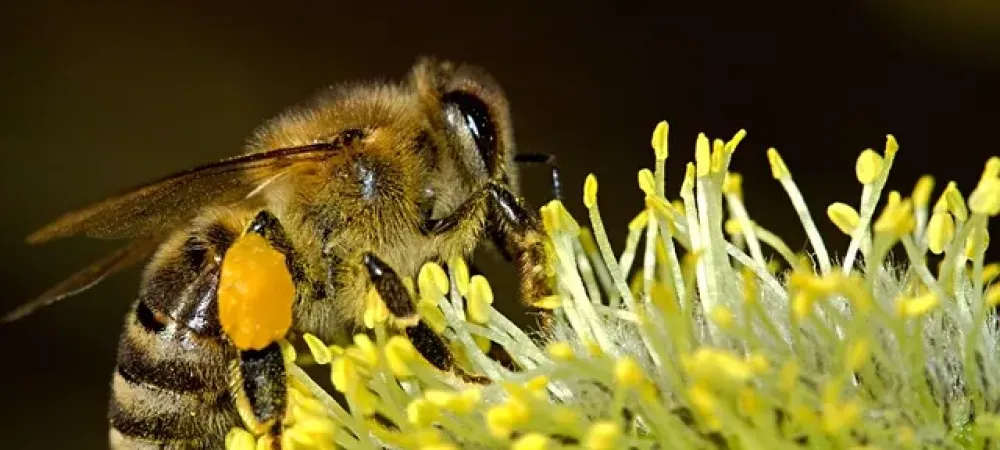Bees vs. Wasps vs. Hornets vs. Yellow Jackets

Do you know the difference between a bee, a wasp, a hornet, and a yellow jacket? Many people find it difficult to differentiate between these yellow, buzzing, stinging insects.
While bees, wasps, hornets, and yellow jackets are similar, they are not the same. Understanding the differences between these types of bugs and being able to identify each can help keep you and your family safe.
Bees
Bees are probably the easiest species to distinguish from this group of pests. Their often round, fuzzy bodies are unique when compared to the appearance of wasps, hornets, and yellow jackets. Bees are usually black and yellow only, whereas other species may have other colors on their bodies.
Typically, bees are not as aggressive as other stinging insects, but they can still attack you if they feel threatened for any reason. However, bees (honeybees in particular) often die after stinging, so they are not known to attack repeatedly.
Bees typically live in hives, which may be found in trees or other areas above the ground.
Wasps
Wasps have thinner bodies compared to rounder bees. They are often black and yellow as well, but the patterns on their bodies can also include other colors, such as orange or white. They have a smoother appearance, without the fuzz that you may see on bees.
Wasps are generally more aggressive than bees. They are not necessarily meaner than bees, but unlike bees, wasps do not lose their stinger — this allows them to attack more than once.
You may find a wasp nest in a tree or other above-ground locations such as under the gutters on your house, but some types of wasps do live in the ground.
Hornets
Hornets have a similar appearance to wasps, with smooth bodies, narrow waists, and different colors and patterns. However, they are generally much larger than wasps, as well as bees and yellow jackets. They will often sting more than once and can cause severe pain and swelling. Hornets generally do not live in the ground, and will build their nests in trees, shrubs, or on man-made structures (for example, under the overhang of a porch).
Yellow Jackets
Yellow jackets are a variation of wasp, and have the smooth, pinched-waist shape of other wasp types, but are usually smaller. They are typically bright yellow and black with stripes. Yellow jackets are known to be aggressive, and their stings can cause pain and swelling. Yellow jackets often build their nests in the ground.
How to Prevent Stinging Insect Infestations
During the year, we typically do a lot of yard maintenance, especially in the fall as the leaves change colors and slowly fall from the trees. However, this maintenance also exposes plenty of places for stinging insects to build nests and hives.
The best way to prevent a stinging insect infestation is to get ongoing treatment throughout the summer to help prevent the population from getting too large. Additionally, the queen will depart the hive during the winter to nestle in a crack or void in a building. Therefore, treating the nest before this happens will reduce the likelihood that hives or nests will be built on your property the following year.
Almost all stinging insects can be dangerous, regardless of the type of species. The Frame’s Pest Control, Inc. team can help you eliminate bees, wasps, hornets, and yellow jackets on your property and minimize the danger to you and your loved ones.
For more information or to book pest control services, call (419) 495-8283 or send us a message.
